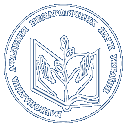- Shparyk, O.M. (orcid.org/0000-0001-7507-4950) (2018) China’s school system: contemporary state and lines of development Український педагогічний журнал, 3. pp. 5-13. ISSN 2411-1317
|
Text
УПЖ_China's school system.pdf Download (913kB) | Preview |
Abstract
This article is intended to provide an overview of education in China today, including mechanisms the country uses to manage its education system, as well as current policies and reforms. It focuses on education in mainland China, and started with a brief overview into the quick facts about special administrative regions (Hong Kong, Macau) and Taiwan. Mainland China, Taiwan, Hong Kong and Macao are connected not only by the geographic proximity of their territories, but also shared cultural and linguistic characteristics. According to National Bureau of Statistics of China, China has the largest education system in the world. With almost 260 million students and over 15 million teachers in about 514 000 schools, excluding graduate education institutions, China’s education system is not only immense but diverse. The article also highlights the main official documents, which regulate the functioning of the school system, such as education laws, the strategic plan for reform and development of education at all levels in China during 2010-2020, etc. The last one delineates national strategies, tasks and system reforms. It also describes education development mission. As to compulsory education development mission, it is: consolidating, enhancing nine-year compulsory education; promoting balanced development in compulsory education; lessening schoolwork burdens on primary, middle school students. In accordance with the Plan, the strategic goals to be attained by the year 2020 are to basically modernize education, bring a learning society into shape, and turn China into a country rich in human resources. It is concluded that the organization of China’s school system has moved from a highly centralized, national system to one that is much more decentralized. It has made the school system more equitable, producing better outcomes for a wider array of students. Strategies such as decentralizing education, stressing on quality assurance and accreditation, and developing various types of education institutions are paying off.
| Item Type: | Article |
|---|---|
| Keywords: | school system; organization; development; China. |
| Subjects: | Science and knowledge. Organization. Computer science. Information. Documentation. Librarianship. Institutions. Publications > 3 Social Sciences > 37 Education > 37.01/.09 Special auxiliary table for theory, principles, methods and organization of education Science and knowledge. Organization. Computer science. Information. Documentation. Librarianship. Institutions. Publications > 3 Social Sciences > 37 Education > 373 Kinds of school providing general education |
| Divisions: | Institute of Pedagogics > Department of Comparative Pedagogy |
| Depositing User: | Оксана Михайлівна Шпарик |
| Date Deposited: | 12 Oct 2018 15:01 |
| Last Modified: | 01 Feb 2019 02:13 |
| URI: | https://lib.iitta.gov.ua/id/eprint/711879 |
Downloads
Downloads per month over past year
Actions (login required)
 |
View Item |




